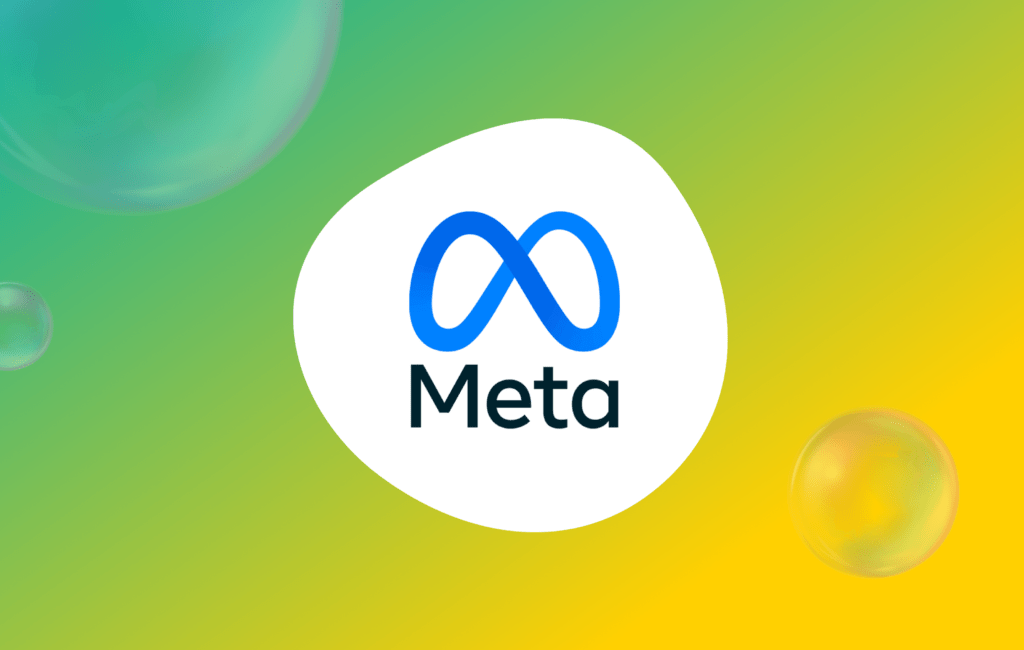At this time of year, many business owners take the time to evaluate their performance, and redefine their goals.
Maybe you’re in the process of doing this right now!
A key part of this process is carrying out competitor analysis. After all, it’s very difficult to assess your business in a vacuum. You’ll know the bare necessities, like whether you’re bringing in a profit or not. However, you won’t know whether you’re outperforming or falling behind the other businesses in your niche without having a look at what they’re doing.
For example, you may notice that your competitors are using their blog more than you are. A quick Google search may even show you that these posts are ranking for keywords.
You may notice that your competitors are making aggressive use of paid ads; perhaps even bidding on your brand name to cut into your share of voice.
You may notice that your competitors have a much slicker checkout process than you do.
You get the picture! Your business may be doing well already, but looking at your competitors can show you what you could be doing even better.
Of course, you may be an old hand at this, and already be keeping a close eye on what your regular competitors are up to. However, some business owners haven’t yet had the chance to explore the modern competitor analysis tools that we have at our disposal. As a result, they haven’t realised just how much information about their competitors it’s possible to get.
Because of that, we thought we’d open the New Year by revisiting what we consider to be the essential competitor research resources. Our CEO wrote a blog about must-have tools for competitor analysis way back in the day, but a lot has changed since then! Here are the 5 competitor research tools that served us best in 2023, and that we’re counting on to deliver the goods in 2024. We’re not saying that they’re categorically the best tools out there, as the market is pretty saturated with solutions. However, we are saying they’re the tools that we’re getting the most value from right now. We can promise you that you won’t regret using them…
Ahrefs

The go-to competitor research solution for our SEO team! Whether it’s used to dissect your competitor’s backlink profiles, uncover their most lucrative keywords, or keep an eye on their content performance, Ahrefs has got you covered. A combination of the Site Explorer, Keywords Explorer, Content Explorer and Site Audit tools can break the back of even the most rigorous competitor analysis requirement.
For our SEO team, though, the biggest strength of Ahrefs is its backlink analysis. Ahrefs has the biggest index of live backlinks in the world. As a result, it really is about the most accurate resource you could wish to have on your side when it comes to digging into what links your competitors have. The fact that the Ahrefs backlink crawler is the fastest in the industry means that this data is also regularly refreshed. You can even set up alerts to monitor changes that occur on your competitors’ websites. This means you’ll always be in the loop about any new backlinks, media mentions and content updates they get!
We’d also like to give an individual shout-out to the Content Explorer tool. This allows you to find the most popular articles on any given topic, according to traffic, referring domains and more. It’s not only great for link-building prospects, but also for discovering low-competition topics that can quite literally reverse engineer your competitors’ content strategies.
SEMRush

Like Ahrefs, Semrush is an all-in-one digital marketing platform that brings utility to just about any niche that you could think of. It’s making our list because of that: it’s probably the single most flexible and comprehensive toolkit you could wish to lay your hands on. No matter whether we need to do competitor research that spans SEO, content marketing, paid media or social media, Semrush has something brilliant to offer.
It also has a few aces up its sleeve that we’re particularly fond of. The first is the on-page SEO checker. This is great for carrying out a quick quality audit for on-page optimisation. We may not always agree with the suggestions it puts out, but they serve as a fantastic starting point when we’re looking to clean up on-page SEO. They also help to break a large project up into bite-size actions.
Secondly, there’s the content template. Again, this isn’t to be followed blindly, but when we’re looking to write a new article to target a keyword we can’t think of a handier tool for giving us a stick in the ground to measure against.
Thirdly, it classifies the toxicity of links. You’ll notice a pattern here when we say that we don’t think this information should ever be taken as gospel over a manual review… but for giving us a head start when we carry out a backlink audit?! It saves us hours, and even lets us disavow from within the tool itself. Bonus!
Lastly, the Traffic Analytics explorer lets you see “hidden” competitor metrics. These include average time on page, bounce rate, referrals, traffic sources, and more. Ever wished you could just take a peek into your competitors’ Google Analytics account? This is as close as it gets.
Google Ads Transparency Centre

Announced on the 29th March 2023, the Google Ads Transparency Centre is a newcomer to the competitor research landscape, and our PPC team already wouldn’t want to do without it! It lets you look at some of the ads that have been active across the full range of channels (search, display, email, video, you name it…), and to do so for a given URL.
The Google Ads Transparency Centre allows you to watch your competitor’s video ads, view their image ads, read their ad copy, and review their call to actions (CTAs). You simply have to select a time range, choose the location of the ads, define the ad format you want to see, and then enter the URL of your competitor, et voilà!
This amazing tool has certainly arrived with a bang, but it does still have a few limitations. For one thing, it doesn’t show you what keywords your competitors are bidding on (although you can often guess them based upon ad copy). It also doesn’t let you click on their ads to jump straight through to their landing pages (although a quick Google Search will usually solve that problem).
Lastly, it only shows data for competitors who have completed the Google advertiser verification program. That said, you can research ads across YouTube and other Google properties to get some data for any missing competitors. Google also looks set to eventually make their verification program mandatory. The available database is therefore only going to grow, which makes us even more excited to keep on using this tool. As far as we’re concerned, most of the limitations have workarounds, and the insights that it offers are too good to miss out on.
Meta Ads Library

Not necessarily a “tool”, but a favourite resource for our paid social team to dip into, and very easy to get to grips with. Competitor research doesn’t have to be complicated! The Meta Ads Library is your official platform to check what kind of ads your competitors are running. It covers Facebook, Instagram, Messenger, and anything else that runs on the Meta Audience Network.
You can filter by country, platform, media type, date or language, and choose to view ads that are relevant for a particular keyword or a particular advertiser. This means it’s useful if you already know who your competitors are, and just as valuable if you’re still defining them. The ads library lets you review the creative assets and formats of your competitors. This includes the type of messaging they are using, their CTAs, their landing pages, their target markets, what ads they are A/B testing, what ads they’ve relied on for a long time and more. It also makes a great complement to the Google Ads Transparency Centre. We say this because it groups different versions of the same ads based upon repeated elements in their format, rather than showing them in one, large chronological display.
Just to add, you can do a very similar thing using the official resources for other social media platforms, like LinkedIn. Sometimes, there really isn’t much need to go beyond the platforms you’re already using.
Google Trends

Be honest; did you expect to see Google Trends making our cut?! However, in the spirit of talking about competitor research that doesn’t have to be complicated, we think that Google Trends fits right in. And, although it may seem like a bit of an alternative take, it gives data that can give you a huge competitor advantage if it’s used correctly.
At face value, Google Trends lets you see the search frequency of specific keywords and phrases at any location around the world. You can interpret the data it produces using line graphs, bar charts and maps, and compare multiple different keywords. The competitive advantage it gives you revolves around forecasting.
On Google Trends, you can easily see how search trends have changed over time and jump on a promising bandwagon at the earliest possible opportunity. Potentially, this means that you can catch our competitors flat-footed. You can also use the “related queries” function to uncover new keywords that relate to your original search term. Your competitors could well be entirely unaware of their existence!
Ultimately, Google Trends helps you to understand the wider business space of keywords and, crucially, brand terms. This means you can see the business names that are growing in spite of a challenging landscape, or those that are shrinking in spite of positive circumstances. And that’s valuable information. You can also see rising queries at a glance, and those queries can (and do) include competitor-related terms. Knowledge like that is powerful, as it lets you move fast – or perhaps even move first. That keeps you ahead of the curve. What’s more, it’s free, so make sure you’re using it!
When it comes to taking stock of your business’s online performance, competitor analysis is an extremely important factor. We use it in all of our strategic planning, and we can’t imagine leaving it out.
Whether you’re new to the idea of competitor research, or have years of experience beneath your belt, the 5 tools that we’ve outlined above will give you a great platform to measure yourself against the competition. You may even find out that you have more opportunities to grow than you realised!
However, no competitor research strategy is a one-and-done experience. There’s a great quote that’s most widely attributed to Picasso…
“Good artists copy; great artists steal”
Not the most conventional saying, we admit, but it gets across a valuable point. Anyone can imitate what others are doing (i.e. copy), but only a select few can really study the work of others and make something their own (i.e. steal). The tools we’ve highlighted will give you information, but you’ll still need to make effective use of them to get the best results.
If you need a hand refining your competitor research strategy, then please complete our contact form. We work with partners in a wide variety of sectors and would be delighted to have a chat about how we can help you dominate the competition in 2024.
